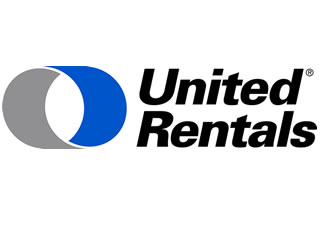United Rentals Q2 Report: Not Good, but It’s Been Worse
United Rentals took a lickin’ in the second quarter of 2010, but keeps on tickin’. The rental giant topped out at $557 million total revenue and rental revenue was $450 million, compared with $615 million and $454 million, respectively, for the same period last year. Operating income was $59 million, compared with $5 million for the same period last year.
 “While we continue to expect a choppy recovery, we believe that we are seeing the early stages of a cyclical upturn on top of the normal seasonal benefit,” Michael Kneeland, chief executive officer of United Rentals. “As contractors take on work with limited access to capital, they are choosing to rent rather than buy equipment. We find it encouraging that demand is coming from more than one source as we move into a recovery. Our branches are meeting these opportunities head-on with a powerful strategy focused on larger construction and industrial accounts, pricing discipline and customer service excellence.”
“While we continue to expect a choppy recovery, we believe that we are seeing the early stages of a cyclical upturn on top of the normal seasonal benefit,” Michael Kneeland, chief executive officer of United Rentals. “As contractors take on work with limited access to capital, they are choosing to rent rather than buy equipment. We find it encouraging that demand is coming from more than one source as we move into a recovery. Our branches are meeting these opportunities head-on with a powerful strategy focused on larger construction and industrial accounts, pricing discipline and customer service excellence.”
The company reported second quarter 2010 net income of $12 million, or $0.18 per diluted share, compared with a net loss of $17 million, or a loss of $0.28 per diluted share, for the same period in 2009. In the second quarter 2010, the company revised its estimate of full-year projected income (loss) and the resulting effective tax rate. As a result, the company’s net income for the quarter reflects an income tax benefit of $9 million. Adjusted EPS for the quarter, which excludes the impact of special items, was $0.25 per diluted share, compared with a loss of $0.24 per diluted share the prior year. Adjusted EBITDA margin, which also excludes the impact of special items, was 32.1 percent for the quarter, compared with 24.4 percent for the prior year.
Second Quarter 2010 highlights include:
• Time utilization increased 4.1 percentage points compared with last year to a second quarter record of 65.4 percent, reflecting an increase in demand and more effective management of a smaller fleet. Rental rates declined 2 percent compared with last year. Dollar utilization, which reflects the impact of time utilization and rental rates, increased 1.8 percentage points to 46.7 precent.
• Free cash flow was $8 million, compared with $70 million last year. To meet increased demand, the company raised its outlook for net rental capital expenditures (defined as purchases of rental equipment less the proceeds from sales of rental equipment) to a range of $160 million to $180 million, from its previous estimate of $100 million to $120 million. The company also reaffirmed its outlook for full year free cash flow of a range of $200 million to $225 million.
• SG&A expense decreased by $11 million, compared with last year. The company has reaffirmed its outlook for full year SG&A expense reduction within a range of $40 million to $50 million.
• Cost of equipment rentals, excluding depreciation, decreased by $4 million compared with last year. The company has updated its outlook for full year expense reduction to a range of $30 million to $50 million, from its previous estimate of $70 million to $90 million.
• The company sold $80 million of used fleet on an original equipment cost basis and generated a positive gross margin of 24.3 precent, compared with $271 million of used fleet sold at a negative gross margin of 9.5 precent for the same period last year.
